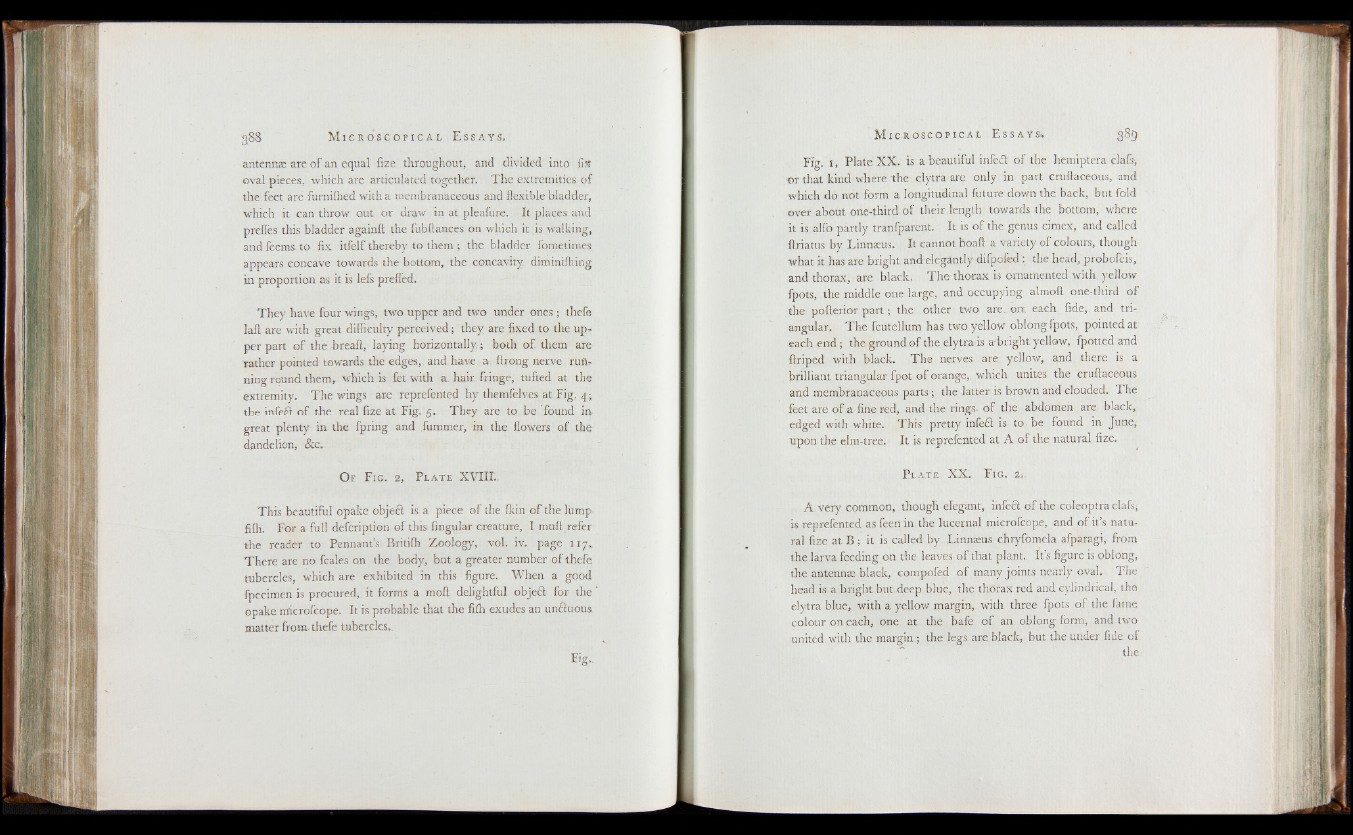
g8& M i c r o s c o p i c a l E s s a y s .
antennas are of an equal fize throughout, and divided into fin
oval pieces, which are articulated together. The extremities of
the feet are furnilhed with a membranaceous and flexible bladder,
which it can throw out or draw in at pleafure. It places and
prefles this bladder againft the fubftances on which it is walking,
and feems to fix itfelf thereby to them ; the bladder fometimes
appears concave towards the bottom, the concavity, diminifhing
in proportion as it is lefs preffed.
They have four wings, two upper and two under ones ; thefe
laft are with great difficulty perceived; they are fixed to the up-
per part o f the breaft, laying horizontally.; both of. them are
rather pointed towards the edges,, and have a. ftrong. nerve ruflr
ning round them, which is fet with a. hair fringe, tufted at the
extremity. The wings are reprefented hy themfelves at Fig, 4 5.
the infefft o f the real fize at Fig. 5. They are to be found in.
great plenty in the fpring and fummer, in the flowers of the-
dandelion, &c.
O e F i g . 2, P l a t e X V I IL .
This beautiful opake object is a piece o f the fkin o f the lum p ,
fifh. For a full defcription o f this Angular creature, I muff refer
the reader to Pennant’s Britifh Zoology, vol. iv. page 117,.
There are no fcales on the body, but a greater number of thefe
tubercles, which are exhibited in this figure. When a good
fpecimen is procured, it forms a moft delightful objeft for the
opake microfcope. It is probable that the fifh exudes an un&uous
matter from, thefe tubercles.
Fig. 1, Plate XX. is a beautiful infedt o f the hemiptera clafs,
•or that kind where the elytra are only in part cruftaceous, and
which do not form a longitudinal future down the back, but fold
over about one-third of their length towards the bottom, where
it is alfo partly tranfparent. It is o f the genus cimex, and called
ftriatus by Linnaeus. It cannot boaft a variety of colours, though
what it has are bright andelegantly difpofed : the head, probolcis,
and thorax, are black. T h e thorax is ornamented with, yellow
fpots, the middle one large, and occupying almoft one-third of
the pofterior p a rt; the other two are. ore each fide,, and triangular.
The fcutellum has two yellow oblong fpots, pointed at
each end; the ground o f the elytra is a-bright yellow, fpotted and
ftriped with black. The nerves are yellow, and there is a
brilliant triangular fpot o f orange, which unites the cruftaceous
and membranaceous parts ; the latter is brown and clouded. The
feet are o f a fine red, and the rings, o f the abdomen are black,
edged with white. This pretty infe£l is to be found in June,
upon the elm-tree. It is reprefented at A o f the natural, fize,
Pl a t e . XX. F ia. 2..
A very common, though elegant, infeft of the.coleoptra clafs,
is reprefented asfeen in the lucernal microfcope, and of it’s natural
fize at B ; it is called by Linnaeus chryfomela afparagi, from
the larva feeding on the leaves of that plant. It’s figure is oblong,
the antennas black, compofed o f many joints nearly oval. The
head is a bright but deep blue, the thorax red and cylindrical, the
elytra blue, with a yellow margin, with three fpots of the fame
colour on each, one at the bafe o f an oblong form, and two
united, with the. margin,; the legs are black, but. the under fide o f
the